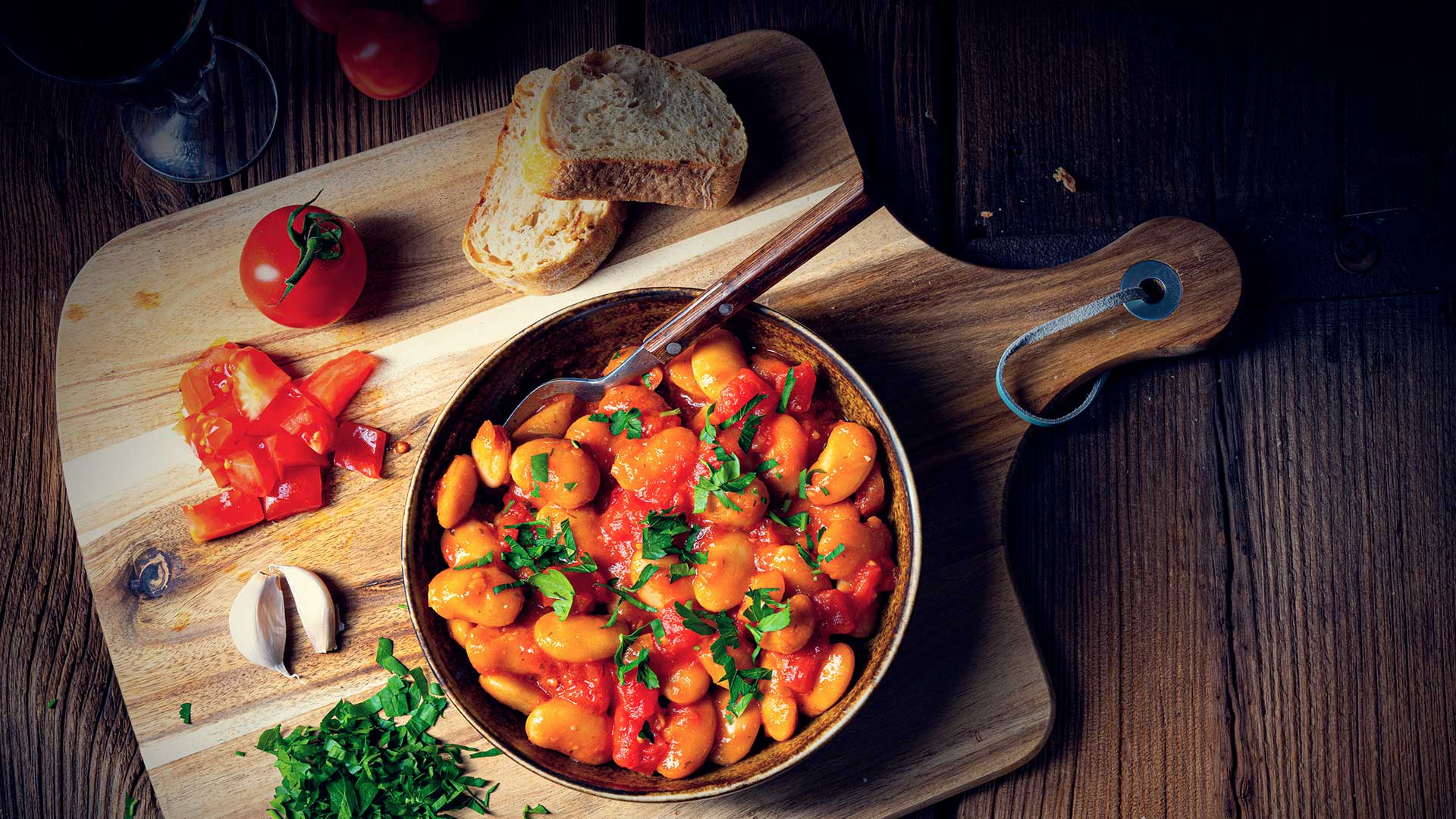
Beans, like all legumes, have 2 very important characteristics which make them one of the main foods in the Mediterranean diet: on the one hand they are low in calories and fat and on the other hand they are very rich in nutrients such as protein, potassium, B complex vitamins (folate, thiamine / B1), fiber and iron.
More specifically, they offer the following dietary benefits:
“Giant” beans (gigantes) are a special type of beans which, as well as all the properties mentioned above, are also particularly rich in:
Dietary analysis of Palirria products which contain beans:
1) Palirria Giant Beans Yiaxni: The finest giant beans and finely chopped tomatoes cooked with fresh dill and parsley. Cooking the giant beans with tomatoes and herbs leads to a dish which is particularly rich in antioxidants. This is because, during the cooking, the tomato plant cell membrane is destroyed meaning that the antioxidant lycopene in the tomato is released and activated. In addition, tomatoes are rich in antioxidant vitamin C which enhances the body’s ability to absorb the iron present in the beans.
Nutritional analysis of the recipe
1) Giant beans with red and green peppers in a vinaigrette sauce: Eating the beans with peppers supplies the body with important antioxidants in the carotenoid (β-carotene) category. These are vitamin A precursors which are required for vision, healthy skin and for strengthening the body’s defense system. In particular, skin is our primary protective shield which prevents microbes from entering the body. An adequate intake of carotenoids helps in the synthesis of vitamin A which is essential for the production of proteins that ensure healthy skin.
Nutritional analysis of the recipe
3) Giant Beans Yiaxni with spinach in a tomato sauce with a mixture of herbs (oregano, basil and thyme): This is a particularly nutritious meal as the combination of spinach and giant beans provides the body with a considerable amount of iron. In particular, a cup covers about a third of the daily recommendation for women and almost the entire quantity recommended for men. This is particularly good for vegetarians. At the same time, the tomato sauce, together with the giant beans and herbs, supplies the body with potassium and fiber, helping to fight cramps and constipation, and controlling blood pressure.
Nutritional analysis of the recipe
4) Giant Beans Yiaxni with fetajuicy tomatoes, olive oil, fresh dill and parsley: A nutritious meal that supplies the body with phytoestrogens and calcium which helps to protect our bones. This makes giant beans with feta an excellent meal, particularly for menopausal women. In addition, it contains important antioxidants from the tomatoes, herbs and olive oil: vitamins C, E, and flavonoids, which protect against cardiovascular diseases and various forms of cancer. It is also important to note that it provides B vitamins that improve the body’s metabolism and its ability to produce energy.
Nutritional analysis of the recipe
5) Black-eyed beans with rice and multicoloured peppers: The rice and beans contain low biological value proteins, meaning they do not contain all the amino acids. In particular, the rice does not contain lysine and the beans do not contain methionine. Because of this, combining them improves the dish’s amino acid profile and increases the amount of protein we can absorb from this meal.
Nutritional analysis of the recipe
Black-eyed beans and kidney beans with rice and multicoloured peppers: